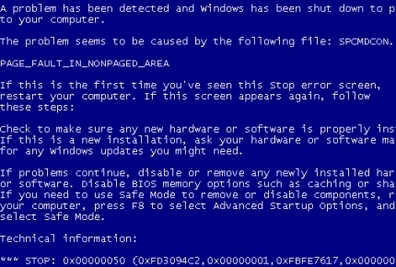What is a 100 percent stable overclock?
February 19, 2009 | 08:09

I’m not sure why a PC that’s less than 100 percent stable is acceptable, but how many times have you read that someone’s got an incredible overclock that ‘works most of the time’, or ‘is fine unless you put too much stress on the system’? A PC that’s less than totally reliable is as useful as a hammer that only works on weekdays or a car that only starts nine times out of ten. You can probably put up with it, but the thing’s broken and needs fixing.
Of course, the magic ‘100 percent stable’ tag is an elusive one. If the PC complete a run of Cinebench R10 but fails to run Crysis for longer than two minutes, is that PC 100 percent stable in Cinebench but not in Crysis?
[break]
Also consider whether a PC that’s been successfully looping a 3DMark test for a year is any more stable than a PC that’s been looping the same test for three days. You’d be harsh to say anything other than that both PCs are 100 percent stable, but should the former be considered as being more stable because it’s lasted longer?
When judging the stability of an overclock (something we’re doing all the time) the best method is to set a barrage of soak and burn-in tests for a system to run. If it passes all these tests, then we can be confident that the overclock is stable. If the system fails even one test, that overclock is unstable and should be disregarded. You’d stop to fix a hammer as soon as it failed to knock a nail in, after all.

I’d say that a PC is only as stable as the last stability test performed on it, and that as soon as it fails one of these tests it should be considered unstable. The importance of a stable overclock can’t be stressed too much; if you know your overclock is stable, then any odd behaviour you experience with your PC can be attributed to something else – a new graphics driver, piece of hardware, the moon changing alignment with Venus or whatever. Having confidence in the stability of your overclock helps problem solving when (yes, not if) problems occur.
For the record, our stress testing of PCs consists of running Prime95 across all process threads (either the 32-bit or 64-bit version) and then looping the Deep Freeze test of 3DMark06 for 24 hours. After this test is passed, we also unleash system-wide tests such as Custom PC’s Media Benchmarks (the Gimp test can be a southbridge killer) and then we load a save game in Crysis and leave ourselves to die and re-spawn for another six hours. We’ve found Crysis to thrash graphics card memory in the past, so this is a good gauge of graphics overclocking and cooling.
Temperatures are monitored with tools such as Core Temp, SysTool and GPU-Z where possible.
Of course, the magic ‘100 percent stable’ tag is an elusive one. If the PC complete a run of Cinebench R10 but fails to run Crysis for longer than two minutes, is that PC 100 percent stable in Cinebench but not in Crysis?
[break]
Also consider whether a PC that’s been successfully looping a 3DMark test for a year is any more stable than a PC that’s been looping the same test for three days. You’d be harsh to say anything other than that both PCs are 100 percent stable, but should the former be considered as being more stable because it’s lasted longer?
When judging the stability of an overclock (something we’re doing all the time) the best method is to set a barrage of soak and burn-in tests for a system to run. If it passes all these tests, then we can be confident that the overclock is stable. If the system fails even one test, that overclock is unstable and should be disregarded. You’d stop to fix a hammer as soon as it failed to knock a nail in, after all.

I’d say that a PC is only as stable as the last stability test performed on it, and that as soon as it fails one of these tests it should be considered unstable. The importance of a stable overclock can’t be stressed too much; if you know your overclock is stable, then any odd behaviour you experience with your PC can be attributed to something else – a new graphics driver, piece of hardware, the moon changing alignment with Venus or whatever. Having confidence in the stability of your overclock helps problem solving when (yes, not if) problems occur.
For the record, our stress testing of PCs consists of running Prime95 across all process threads (either the 32-bit or 64-bit version) and then looping the Deep Freeze test of 3DMark06 for 24 hours. After this test is passed, we also unleash system-wide tests such as Custom PC’s Media Benchmarks (the Gimp test can be a southbridge killer) and then we load a save game in Crysis and leave ourselves to die and re-spawn for another six hours. We’ve found Crysis to thrash graphics card memory in the past, so this is a good gauge of graphics overclocking and cooling.
Temperatures are monitored with tools such as Core Temp, SysTool and GPU-Z where possible.

MSI MPG Velox 100R Chassis Review
October 14 2021 | 15:04





Want to comment? Please log in.